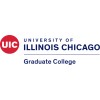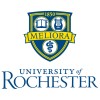
Safety and Efficacy Study of Dronabinol to Treat Obstructive Sleep Apnea
Sleep ApneaObstructiveThis is a proof of concept study to determine the safety and efficacy of dronabinol for the treatment of obstructive sleep apnea syndrome (OSA).

Effect of CPAP Treatment in Women With Moderate-to-severe OSA.
Obstructive Sleep ApneaThe purpose of this study is to determine whether Continuous Positive Airways Pressure (CPAP) improves quality of life, cardiovascular (blood pressure) and metabolic profile (glucose and lipid metabolism) in females with moderate-to-severe Obstructive Sleep Apnea (OSA).

Non-Inferiority Study of the FRESCA Mask Versus Existing CPAP Mask for Treatment of Obstructive...
Obstructive Sleep ApneaSleep Apnea1 moreThis will be a prospective study in subjects with Obstructive Sleep Apnea (OSA) to characterize the clinical performance during a single night of therapy with a FRESCA mask compared with a single night of therapy with their existing nasal Continuous Positive Airway Pressure (CPAP) mask.

Evaluation of a Full Face Mask and Headgear for the Treatment of Obstructive Sleep Apnea
Obstructive Sleep ApneaCurrently Fisher & Paykel Healthcare (FPH) is developing a new full face mask. The objective of this clinical investigation is to evaluate the usability and acceptance of the investigative mask, the effectiveness of the seal and headgear. The participant will be randomised to use either full face mask prototype 1 or 2 as according to the randomization log for 7 ± 3 days in home. The participant will then crossover to the other full face mask prototype to use in home for 7 ± 3 days. Neither the investigators or the participants will be blinded to the study.

Effect of a Very Low Calorie and Low Calorie Diet on Moderate to Severe Obstructive Sleep Apnea...
Obstructive Sleep ApneaThe purpose of this study is to test the effectiveness of two different weight loss diets on obstructive sleep apnea (OSA) severity.

Steroids for Pediatric Apnea Research in Kids
Obstructive Sleep Apnea SyndromeThis double-blind, randomized controlled trial will evaluate the use of nasal corticosteroids for the treatment of the childhood obstructive sleep apnea syndrome (OSAS). Efficacy, duration of action and side-effects will be determined.

Effect of CPAP Treatment in Elderly: Randomized Clinical Trial
Sleep ApneaObstructiveRationale: Almost all the information the investigators have about the effect of continuous positive airway pressure (CPAP) in patients with obstructive sleep apnea (OSA) comes from randomized clinical trials including only middle-aged patients. Little is know, however, about the effect of CPAP in elderly people with OSA. Objective: To assess the effect of CPAP treatment in elderly patients with severe OSA on clinical, quality-of-life and neurocognitive spheres. Methods and Measurements: Open-label, randomized, multicenter clinical trial of parallel groups with blinded end-point design conducted in 12 Spanish teaching hospitals on a consecutive clinical cohort of elderly (≥ 70 years) patients with confirmed severe OSA (IAH≥ 30) receiving CPAP or no therapy while maintaining their usual control for three months. CPAP titration was performed by an auto CPAP device. A good adherence was set as at least 4 hours/day of CPAP use. Primary endpoint was the measurement of quality of life by the Quebec Sleep questionnaire, which includes diurnal and nocturnal symptoms, hypersomnolence, and social and emotional dimensions. Secondary endpoints include different sleep-related symptoms, presence of anxiety or depression, office blood pressure figures and some neurocognitive tests. Patients were invited to a clinical visit on three occasions to quantify the adherence to CPAP. Intention-to-treat analysis was performed.

Upper Airway Physical Therapy for the Treatment of Obstructive Sleep Apnea
Obstructive Sleep Apnea SyndromeThe purpose of this study is to determine the effectiveness and feasibility of upper airway muscle physical therapy utilizing negative airway pressure (NAP) breathing training in patients with Obstructive Sleep Apnea Syndrome (OSAS) in reducing both signs (apnea hypopnea index) and symptoms (i.e., daytime sleepiness).The key to the proposed therapy is the use of Negative Air Pressure when awake so that the increased reflex phasic drive to the muscles will result in muscle conditioning. Interestingly, other studies have indicated that upper airway muscle training may be useful in treating OSAS, but these studies used techniques that were not scientifically designed{Puhan, 2006 8195 /id} or used a technique (electrical stimulation) that was not well tolerated.{Lequeux, 2005 7514 /id}

Sugammadex Compared With Neostigmin/Atropin for Neuromuscular Block Reversal in Patients With Obstructive...
Obstructive Sleep ApneaIncomplete recovery of neuromuscular function after surgery can lead to respiratory complications. Patients with obstructive sleep apnea (OSA) are prone to respiratory complications after surgery. Neostigmin and sugammadex are used for neuromuscular reversal. The aim of this study was to compare sugammadex and neostigmin regarding efficacy, incidence of respiratory complications and cost in patients undergoing surgery for OSA

Nasal Tramazoline and Dexamethazone in Obstructive Sleep Apnea (OSA) Patients Tramazoline and
Obstructive Sleep Apnea SyndromeNasal resistance presents considerable variations during night[8]. Additionally, Oral and oro-nasal breathing epochs exhibit strong correlation with the number of apnoea/hypopnoeas [7].The hypothesis that the present study aims to test is whether the pharmacological prevention of increased nasal resistance during night could alter breathing route pattern and lead to a decrease in the number of apnoea/hypopnoeas in OSA patients with normal nasal resistance.
